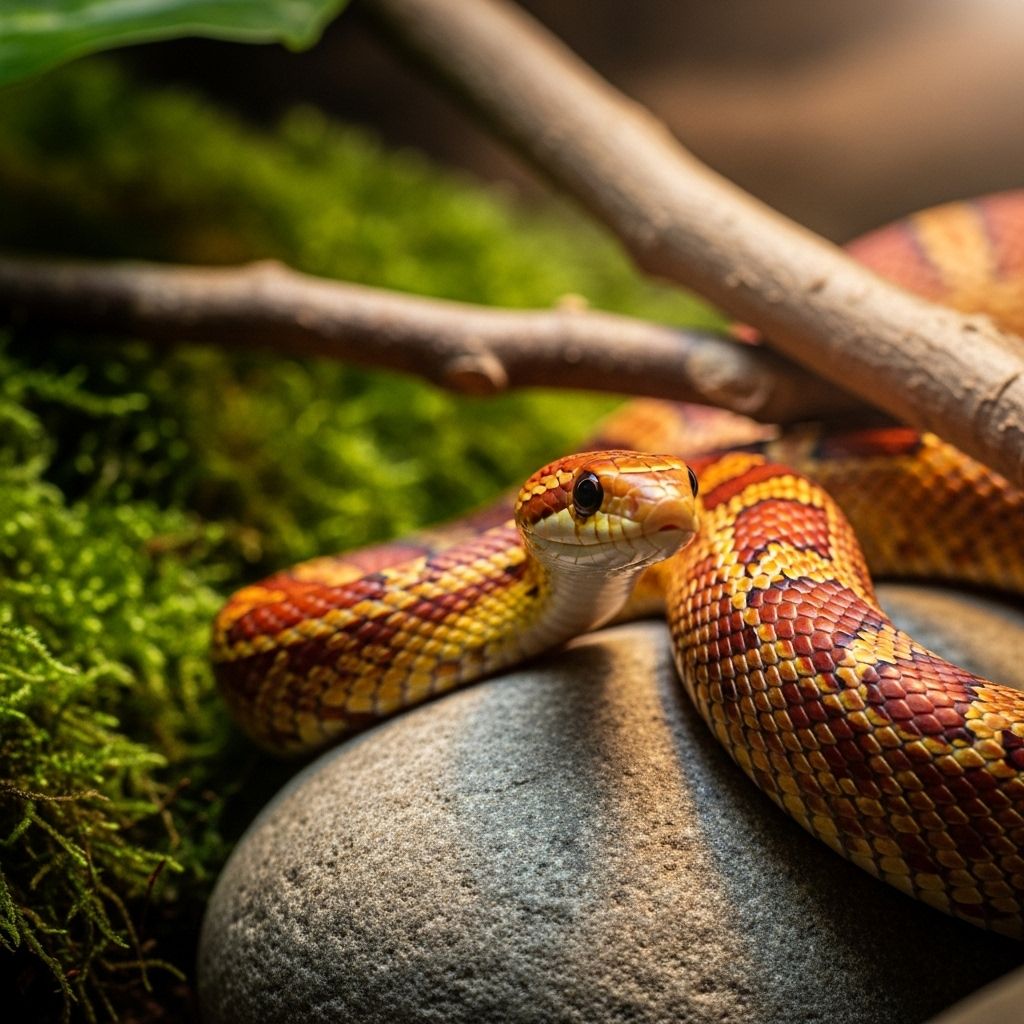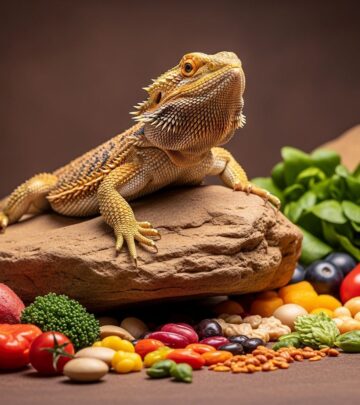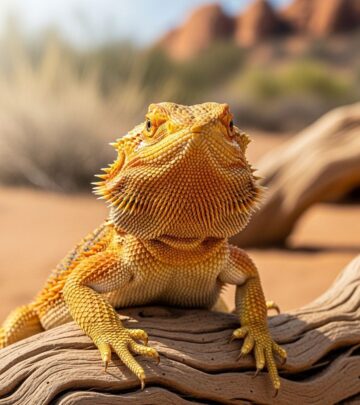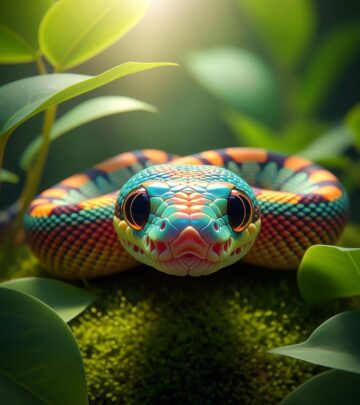A Comprehensive Guide to Pet Snake Care: Choosing, Housing, Feeding, and Health
Advice on secure enclosures and tailored feeding routines that honor snake instincts.

Pet Snakes: Essential Guide for Beginner and Experienced Owners
Snakes are fascinating, low-maintenance pets that offer both beginners and experienced herpetologists an engaging animal to care for. With their remarkable diversity, intriguing behaviors, and relatively simple upkeep compared to other pets, snakes have become popular among reptile enthusiasts. This guide covers all the core aspects of pet snake care—from choosing the right species to establishing their home environment, understanding their diet, and ensuring their health.
Advantages and Considerations for Keeping Pet Snakes
- Low Maintenance: Most snakes require less frequent feeding and cleaning than mammals.
- Allergy-Friendly: Snakes lack fur, reducing allergy risk.
- Minimal Noise/Smell: Snakes are quiet and odors are manageable with proper enclosure cleaning.
- Space-Efficient: Even large species can be kept in reasonably sized enclosures.
While snakes offer these benefits, owners must also consider their unique care requirements, the importance of species selection, and their specialized needs.
Choosing the Right Pet Snake
Before bringing home a snake, assess your experience level, available space, budget, and comfort with feeding practices. Not all snakes are suitable for beginners; focus on species known for manageable size, docile temperament, and lower maintenance.
- Temperament: Choose a species with a reputation for docility.
- Adult Size: Smaller species are easier for most owners.
- Feeding Preferences: Most pet snakes eat whole rodents; ensure you’re comfortable with this.
- Habitat Needs: Some species require higher humidity/temperature, which may demand specialized equipment.
- Lifespan: Many pet snakes can live 15-20 years.
Reptile expos, responsible breeders, and specialty pet stores are the best sources for healthy captive-bred snakes, which are more likely to be disease-free and adapt well to captivity.
Recommended Beginner Snake Species
| Snake Species | Adult Size | Temperament | Care Level |
|---|---|---|---|
| Corn Snake (Pantherophis guttatus) | 3–5 feet | Very docile, easy to handle | Easy |
| Ball Python (Python regius) | 3–5 feet | Calm, shy, gentle | Easy–Moderate |
| California Kingsnake (Lampropeltis californiae) | 3–4 feet | Active, moderate | Easy |
| Milk Snake (Lampropeltis triangulum) | 2–4 feet | Active, tolerant | Easy |
| Rosy Boa (Lichanura trivirgata) | 1.5–3 feet | Calm, slow-moving | Easy |
Setting Up a Proper Snake Habitat
A snake’s enclosure must be secure, appropriately sized, and carefully maintained. Habitat setup varies with species, but most share key requirements:
- Enclosure Size: Minimum of twice the snake’s length in enclosure length. Larger is better.
- Secure Lid: Essential to prevent escapes.
- Hiding Spots: Place at least two hide boxes, one at the warm end and one at the cool end.
- Substrate: Use reptile carpet, vinyl, or paper towels. Avoid loose substrates like dirt, shavings, or bark that can cause impaction or harbor pests.
- Temperature Gradient: Provide a range with basking/warm side (usually 80–90°F depending on species) and cool side (72–80°F).
- Humidity: Maintain humidity suited to species; ball pythons require 50–60%, while corn snakes are comfortable around 40–50%.
- Water Bowl: Large enough for soaking, cleaned and refilled daily.
- Climbing Structures: For semi-arboreal species such as green tree python, add branches and sturdy decor.
Lighting and Heating
Provide appropriate heat sources: under-tank heaters, ceramic emitters, or heat bulbs. Use thermostats to regulate temperature and prevent overheating. Snake enclosures typically do not require UVB lighting, but a regular day-night cycle is recommended.
Diet and Nutrition for Pet Snakes
Snakes are obligate carnivores, thriving on whole prey items. The diet depends on age, species, and size.
- Hatchlings: Most eat ‘pinkie’ mice, sized to fit comfortably in the snake’s mouth. Feed every 5–7 days.
- Juveniles/Adults: Feed appropriately sized mice or rats every 7–14 days, depending on size and metabolic needs.
- Preferred Feeding: Offer frozen-thawed prey to prevent injury and ensure sanitary feeding.
- Water: Fresh, clean water must be available at all times. Replace daily and check for contamination.
Always feed snakes in a separate enclosure to prevent them associating you with food and reduce feeding aggression. Snakes may refuse food while shedding, under stress, or during seasonal cycles. Persistent refusal warrants a vet consultation.
Health and Veterinary Care
Annual checkups with a reptile veterinarian are strongly recommended. Common health problems can include:
- Parasites: Both internal and external, such as mites and ticks.
- Respiratory Infections: Often caused by poor husbandry. Signs can include wheezing, bubbles at nostrils, and lethargy.
- Stomatitis (Mouth Rot): Inflamed mouth, may ooze pus.
- Retained Shed: Snakes struggling to shed skin may have retained eyecaps or patches.
- Scale Rot: Infections or ulcers on scales caused by damp/dirty bedding.
- Constipation/Blockage: May arise from dehydration or impaction.
If abnormal behavior, refusal to feed, or visible illness is noted, consult an experienced veterinary professional quickly. Proper preventative care, including routine cleaning and monitoring, will reduce disease risk.
Handling and Snake Behavior
- Initial Acclimation: Allow a new snake 1–2 weeks without handling to acclimate to its enclosure.
- Gentle Handling: Support the body fully; avoid sudden movements. Short, stress-free sessions are best.
- Post-Feeding: Do not handle snakes for at least 2–3 days after feeding.
- Tools: Snake hooks can help with shy or defensive snakes, especially arboreal species.
Snakes are solitary, and cohabitation can cause stress or aggression. Observe body language:
- Relaxed: Smooth, exploratory movement.
- Defensive/Stressed: Coiling, hissing, tail rattling, or striking posture.
- Balling Up: Some species (ball python) roll into a defensive ball instead of striking.
Snakes usually do not recognize owners in the same way mammals might, but regular, positive interactions can make handling easier.
Common Snake Species: Brief Profiles
Corn Snake (Pantherophis guttatus)
- Excellent for beginners—docile, hardy, and widely available.
- Adult size is manageable; numerous color morphs available.
- Feeds readily on frozen-thawed mice. Habitat needs are simple.
Ball Python (Python regius)
- Known for gentle disposition. May refuse food at times, especially during shed or stress.
- Needs stable temperature and moderate humidity.
- Variety of attractive patterns; will ball up if threatened.
California Kingsnake (Lampropeltis californiae)
- Active hunters. Often easy to handle but can be feisty.
- Thrives with basic snake care—dry habitat, regular feeding.
Green Tree Python (Morelia viridis)
- Striking appearance, best for intermediate keepers.
- Needs arboreal enclosure with branches and stable temperatures (75–85°F).
- Bioactive setups are possible and helpful for this species.
- Handle with care; use snake hooks and gloves when necessary.
Enclosure Maintenance and Cleaning
- Spot-clean enclosure weekly: remove feces, urates, shed skin.
- Disinfect water bowl and enclosure accessories regularly.
- Every four to six weeks, perform full substrate change and deeper clean.
- Monitor temperature and humidity daily with accurate gauges.
Clean hands before and after handling to prevent transmission of pathogens.
Frequently Asked Questions About Pet Snakes
Do snakes make good pets for children?
Children can enjoy snakes, but adult supervision is always required for safety and to avoid mishandling. Some species are better suited than others; corn snakes are among the most recommended for young beginners.
How often should I feed my pet snake?
Frequency depends on the snake’s age and species: hatchlings and juveniles every 5–7 days, adults every 7–14 days. Adjust based on individual growth and metabolism.
Can two snakes be housed together?
Most snakes are solitary and should be housed individually to prevent stress, competition, and cannibalism. There are rare exceptions, but this requires expertise and careful species selection.
What is the best substrate for snake enclosures?
Use reptile carpet, paper towels, or stick-on vinyl for ease of cleaning and health. Avoid loose substrates like wood shavings or dirt, especially for beginners.
How do I recognize if my snake is sick?
Signs of illness include refusal to eat, lethargy, abnormal shedding, swelling, mouth discharge, labored breathing, or visible parasites on the skin. Immediate veterinary advice is recommended if symptoms appear.
Final Thoughts
With the right care and attention, pet snakes can make fascinating, rewarding companions. Responsible ownership means understanding specific species’ needs, maintaining proper habitats, and seeking regular veterinary care. By learning, planning, and carefully observing your snake’s behavior and health, you can enjoy years of unique pet experiences.
- Relevant Keywords: Pet snakes, snake care, beginner snakes, reptile health, snake enclosure
- Structured Q&A: Provided in FAQ section
- Accessible format: Bullet points, tables, headings, strong formatting
References
- https://www.birdexoticsvet.com/snake-care-guide
- https://www.youtube.com/watch?v=wlR4Pzh9EJg
- https://www.youtube.com/watch?v=iessmEj4Xe0
- https://reptichip.com/blogs/reptitips/reptichip-featured-on-the-spruce-pets-the-5-best-snake-bedding-options-of-2023
- https://zenhabitats.ca/pages/hognose-snake-care
- https://www.fauna-care.com/post/6-questions-you-should-ask-before-you-get-your-first-reptile
Read full bio of Sneha Tete












